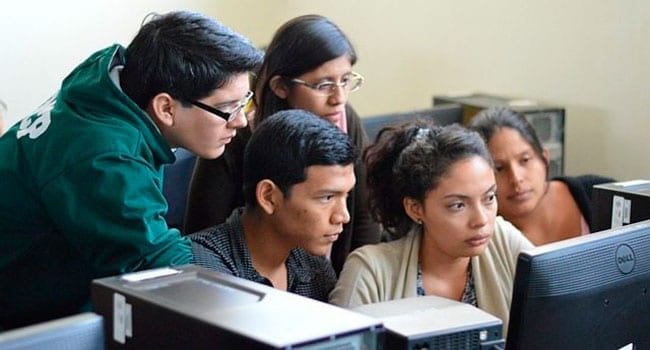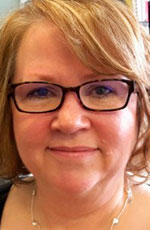At a time when reliance on digital technology and online interaction is a daily fact of life, fewer than half of Canada’s provinces and territories include computing science in their elementary and middle-school curricula.
A University of Alberta secondary education expert is working with a national network of teachers, computing scientists and other educational stakeholders to change that.
Cathy Adams, a professor in the Faculty of Education, is one of 12 experts who have developed a new Canada-wide framework for kindergarten-to-Grade-12 computer science curriculum with Canada Learning Code.
“Alberta has an excellent high-school computing science curriculum. However, it is optional and comes too late for many students,” said Adams.
“It has long been established that basic computing science principles can be learned in the early grades alongside mathematics and science. Across the globe, it is also recognized that computing literacy and the ability to problem-solve through computational thinking are now essential competencies for current and future generations.”
The framework highlights five main focus areas of computer science education: programming, computing and networks, data, technology and society, and design. Each area has its own competency guide that helps educators leverage the real-world knowledge students can develop through learning computing science.
“One of the pillars in the technology and society focus area, for example, engages primary students in grappling with their technological surroundings and how computing technologies have changed the ways people live, work and play together,” said Adams.
Edmonton-based startup teaching elementary students code
“As they begin to develop their understanding of and competency in creating digital technologies, students are asked to explore how technology influences society as well as how they can shape technologies. In the later grades, the societal effects of computing on various groups – Indigenous peoples, visible minorities, people with disabilities – are analyzed and evaluated.
“For me, the framework’s strong inclusion of the ethical, cultural, societal and ecological issues concerning today’s technologies marks it as distinctly Canadian.”
Adams said focusing their efforts nationally as opposed to working with each provincial or territorial government means that each provincial or territorial ministry can adapt the advice to its own curricular contexts.
“I hope the framework is widely adopted as a curriculum guide for education ministries across Canada as they embark on new curricular initiatives, especially in the early grades,” she added.
“Digital technology touches nearly every aspect of our lives now. It is critical that all Canadians have a working grasp of the science behind it.”
| By Kateryna Barnes
This article was submitted by the University of Alberta’s online publication Folio, a Troy Media content provider partner.
The views, opinions and positions expressed by columnists and contributors are the author’s alone. They do not inherently or expressly reflect the views, opinions and/or positions of our publication.



